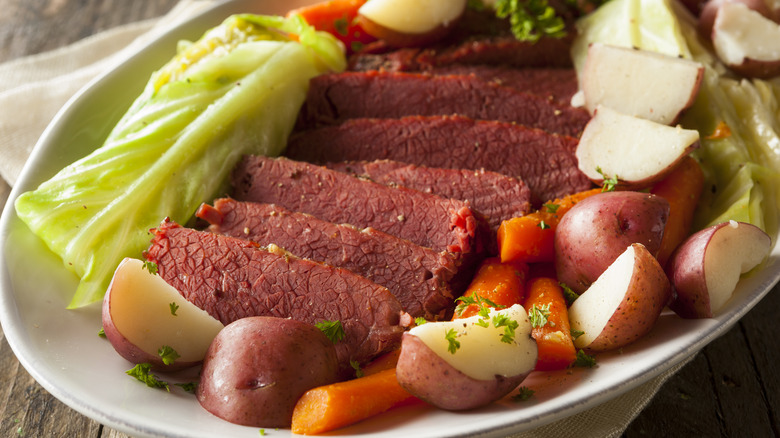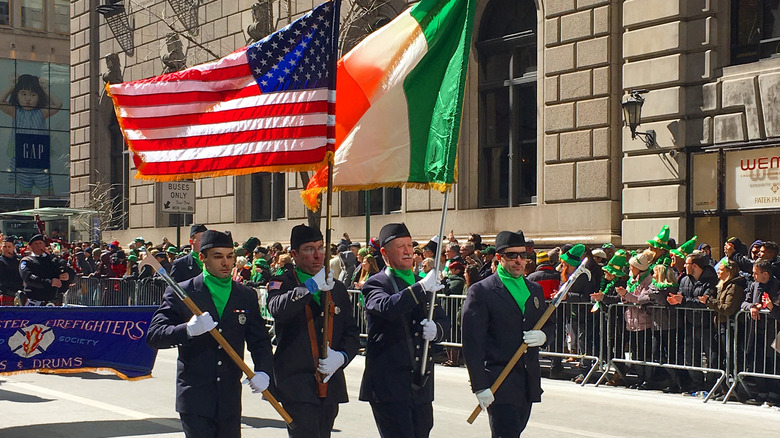How Corned Beef Became A St. Patrick's Day Staple
Whether you love it, hate it, or simply tolerate it one day per year, there's no denying that corned beef is an integral part of any St. Patrick's Day feast. Traditionally served alongside boiled cabbage and potatoes, this inexpensive preparation of beef brisket — which is cured in a salty brine over the course of days and slow-cooked until tender — has long been a staple of the Irish holiday.
While this dish has become synonymous with the Guinness-fueled holiday, the roots of this St. Paddy's Day tradition may not be as authentically Irish as you thought. According to The Kitchn, although Ireland has been a major producer of cured meats since the Middle Ages, corned beef has never been a staple of the average Irish household.
While the Irish have historically consumed plenty of salted meat products — most prominently, salted pork — beef wasn't a common protein source for the country. For much of Ireland's early history, pigs were the primary source of meat, while cows, which were considered a sacred animal by the Gaelic population, were used primarily for farm labor and dairy products (via The Smithsonian).
Although the island nation eventually began producing large quantities of corned beef for trade to England and France, the meat was still widely considered too expensive for the average family. So, how did the most famed Irish holiday become so intrinsically tied to corned beef? According to Irish Central, the link between corned beef and St. Patrick's Day can be traced back to Irish-American immigrants in the 19th and 20th centuries.
Corned beef was popularized by Irish-American immigrants
The Irish immigrants, many of whom settled in the Lower East Side of Manhattan in close proximity to Jewish communities, quickly found that beef, which was considered an expensive delicacy in their native country, was far more affordable — while salted pork was harder to come by. Corned beef, which has a similar texture to salted pork and is made with inexpensive brisket, was the cheapest and most familiar source of beef available to them.
Many culinary historians point out that while corned beef is often associated with Irish culture, it is, in fact, a Jewish dish, which became popular with the Irish-American immigrant community (via The Nosher). The salted beef was paired with affordable, hearty vegetables — like potatoes, carrots, cabbage, and turnips — for a cheap, filling meal that could easily feed a whole family.
Throughout the 20th century, Irish bars across NYC commonly offered a free corned beef lunch to Irish construction workers (with the purchase of beer or whiskey) to draw in more customers, furthering popularizing the cured meat among the Irish-American community (via Salon).
While the precise turning point when corned beef evolved from a cheap, hearty meal option for Irish immigrants to a major symbol of St. Patrick's Day is unclear, one thing is certain: Corned beef fans have Jewish, not Irish, cuisine to thank for this classic celebratory dish.

